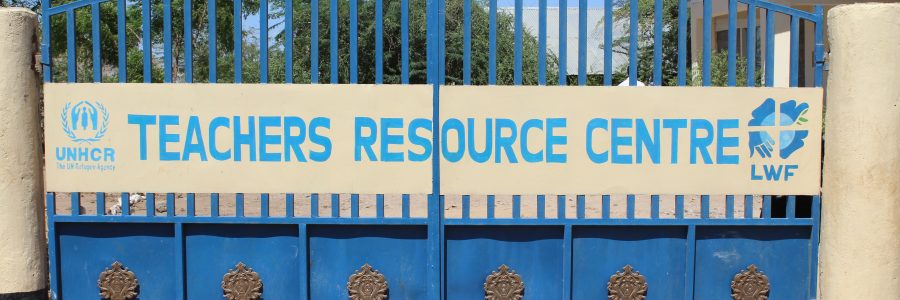
In Kakuma, teaching means something very different than here.
In early December, four teachers and a filmmaker went to the Kakuma refugee camp in Kenya. The goal: to teach teachers who are teaching in secondary schools about teaching. In Kakuma, only 3% of the children who have to go to high school actually attend school, because of the fact that they can not or are not allowed to (girls), because there are no teachers or because there are no places to teach. Kakuma is a camp where at least 10 nationalities reside, from amongst others southern Sudan, Somalia, Ethiopia; people from areas where war, political unrest and violence prevails. About 190,000 people reside here, including approximately 90,000 children. The teachers that teach usually have no teaching qualifications; with a little luck they just completed their high school education themselves. Sixty of those student-teachers were accompanied by four of our teachers (Nicole Reith, Stephanie Edwards, French Kriger and Hans van Bergen) and filmed by Lucas Westerbeek.
It was quite the question: develop a program for 60 people, 10 key users and teachers-to-be. In six months-time you will get a couple of moments in which you can see the group. We start in six weeks. Plenty of obstacles: we don’t know the culture, nor the living conditions, the starting level, the learning environment, the technical possibilities… But the potential was huge, as well as the need for our educational innovation knowledge. And we have a social mission.
In a short period of time, the teachers developed a three-day program for the pilot: trainer skills, curriculum design, 21st-century skills. All focused on the application of knowledge to the learning environment of the student-teachers. The enthusiasm for the workshops and the tools they received created synergy between the student-teachers and trainers. In the film (link) students explain that their world has changed after these days. The teachers say the same thing: your perception of normality changes completely; our world seems ‘over the top’, wasteful; we use much more than necessary.
Nicole: “We came into a world where education means something very different than here. In Kakuma, education is generally very directive. We have provided the means for students to deal with it in a different way and also to make use of the outside world. We have enabled the students to learn together instead of just learning from the teacher.”
“We are accustomed to the use of technology and use that to its full potential in education; power and Wi-Fi are always present – which is not the case there. And even though you know it in advance, it is still very confronting to experience it in real life. We wanted to continue to instruct and guide student-teachers through a digital platform, but it became apparent quickly that the facilities to do so are very limited. No Wi-Fi, no access to a building with equipment. Some students are on Facebook, and we thus hear from them, but it appears difficult to get real contact. The greater the need becomes to make Wi-Fi and well-functioning technical resources happen. That will have real added value and will help kick-start the curriculum.”
Looking back on the days in Kakuma Nicole says: “What struck me the most was the incredible eagerness of teachers, the huge desire to achieve something despite the bad conditions.” There is so much resilience, determination and passion. “What do you do when you are sick of malaria, have high fever and have to walk for an hour to get to the training location? You go.”
“The camp is big, but you only realise that when you see it. A couple of times we dropped people of and then you see the size of the camp and how far they had to walk. That defied every description. This also applies to the camp itself: everything is construction material, anything that can close something off or be used for something practical is actually used: plastic, straight sticks, curved sticks, corrugated sheet, sackcloth bags – if you can think of it, it’s useful.”
“That was so special because you can see the conditions under which people have to operate. And that in an environment like the camp; the places where people stay, the scarcity of food. Each meal is sacred, so we gave them food during training. This way they did not have to take any food away from their own family. And you eat everything you get, because you do not know what you get to eat tomorrow.”
There are many stories to tell, about the training itself and also about the people and the conditions in the camp. Make sure to read about the program on the HU website. We will inform you about how we will proceed. Like the Facebook page and for an impression of this incredible experience, watch this video.
